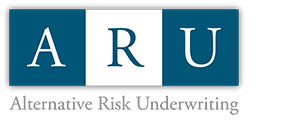
Many businesses are now finding out about the benefits of captive insurance. Even though the number of companies utilizing captive insurance is increasing, some companies are still missing out. If your business hasn’t considered its captive insurance options yet, it’s time to take a look at the many benefits for large and mid-size businesses.
The Growing Appeal of Captive Insurance Companies
According the National Association of Insurance Commissioners (NAIC), there were around 1,000 captive insurance companies in 1980. Now, there are more than 7,000. Plus, approximately 90% of all Fortune 500 companies have captive subsidiaries.
However, the captive insurance model isn’t just for large corporations. Thanks to the rise of the group captive insurance models, midsize companies can also reap the benefits. In fact, the development of new captive types is one reason why the model has become more common. With captive insurance becoming more accessible to a wider range of companies, more business leaders are gaining the benefits Fortune 500 companies have been enjoying for years.
Captive insurance offers seven key benefits.
1. Reduce Your Costs
When you switch to a group captive model, your business is the co-owner of the captive insurance company. This creates the potential for huge savings. In fact, cost savings is one of the main appeals of the captive model.
When you pay your insurance premium, the insurer allocates roughly 60% of the premiums paid to cover your potential claims. The other 40% are used to cover the insurer’s operating costs.
So, for example, if your premiums are $300,000, the insurer expects to spend roughly $180,000 in claims. However, if you don’t have $180,000 in claims, they don’t refund your money. They keep that money and use it to cover other businesses that have higher than expected costs.
Let’s look at two scenarios:
- Fully Insured: You pay the full $300,000 and you never get any premiums refunded, even if you don’t have any claims.
- Group captive: You pay $300,000, $180,000 of which is allocated for potential claims. However, you only have $60,000 in claims. Depending on the performance of your captive group, you could potentially earn big dividends because you kept your claims in check.
Co-owners in the captive group that you are part of have been carefully vetted based on their commitment to risk management. All are equally motivated to reap the rewards of low claim frequency and severity.
Conversely, in the traditional insurance model, carriers keep the profit generated by your business and use it to cover losses from other policyholders and various administrative and marketing costs. In the captive model, the business retains ownership of underwriting profits and earns dividends by keeping losses down.
2. Own Your Investment Income
Insurance carriers invest the funds they hold to generate investment income. This is an important part of their strategy for maintaining financial health when losses are higher than expected. Policyholders never benefit from the investment income generated by their premiums. If you don’t have any claims or your claims are low, the insurer keeps both the underwriting profit and the investment income generated.
On the other hand, businesses that are part of a group captive retain the underwriting profit as well as any investment income generated by the funds held. This is one more reason why the captive model makes financial sense for many companies.
3. Have More Control Over Your Coverage
When you buy insurance coverage in the traditional market, you often have to take what you can find, especially in a hard market. For example, the health plan that meets your budget might not have the provider network you want or the insurance carrier might not allow the deductible you want. In some cases, insurers may be unwilling to write certain risks.
With captive insurance, you have much greater control over your coverage. You can enjoy more flexible coverage options that cater to your needs. With the group captive model, you can also access unbundled services, which gives you the flexibility to craft a program that meets your needs. Likewise, group captive members have greater control over service providers and investments.
4. Increase Your Leverage
With traditional coverage, large corporations tend to have significant leverage, which helps them negotiate terms. Middle-market companies, on the other hand, may lack leverage to do well in such negotiations.
In the group captive model, multiple midsize businesses pool resources to increase their leverage. This allows them to access better services, networks, and terms than they would be able to access on their own.
5. Break Free of Insurance Market Cycles
If you follow the news about the insurance market, you’ll hear about soft and hard market cycles. During soft markets, insurance carriers are competing against each other to write more policies, meaning policyholders enjoy more robust coverage terms, greater coverage availability, and better prices. During hard markets, insurance carriers are trying to reduce their risks, meaning policyholders have a harder time securing coverage, terms tend to be more restrictive, and costs may skyrocket.
Although business leaders may be content during soft markets, the good times won’t last. Eventually the market will harden, leaving many businesses struggling to secure affordable coverage. This makes it difficult for businesses to establish long-term financial stability.
When businesses embrace the captive model, they break free of insurance market cycles. This is obviously a good thing during hard markets, but it also provides stability during soft markets.
6. See Rewards for Keeping Losses Down
Traditional insurers want you to keep losses down because they stand to profit. In exchange, they’ll probably give you better rates than you could secure if you had a worse loss history. However, those rates will still be inflated, due to the impact of market cycles and losses the insurer incurs from other accounts.
When you choose the captive model, your prices are based on you or your group’s loss history. You don’t need to worry about your rates increasing due to losses that other companies in your industry suffer. Plus, you’ll even receive dividends if you keep losses down because you’ll retain ownership of the underwriting profits and investment income.
As a result, companies that use the captive model are highly motivated to focus on risk management to prevent and mitigate losses. This proactive stance may lead to other operational advantages, such as improved efficiency, happier customers, and better worker morale.
7. Cover Many of Your Captive Needs
When many people think of captives, they envision an employee benefits program that provides health plan coverage. This is a common use of the captive model, but it’s not the only one. Captive insurance services can be used to manage a wide range of exposures, including commercial auto, commercial property, and general liability insurance.
Are You Ready to Reap the Benefits of Captive Insurance?
Take the first step toward enjoying the benefits of captive insurance.
To be eligible for ARU’s innovative group captive programs, your business needs to meet a few criteria:
- A history of being profitable for your current insurance company.
- Good financial condition, management, and safety practices.
- Current premium costs of more than $250,000 for primary casualty insurance.
We offer several group captives designed to serve different industries and insurance needs:
- Agricultural Group Captive
- Casualty Group Captive
- Construction Group Captive
- Property Insurance Group Captive
- Trucking Group Captive
- Stop-Loss Group Captive
The sooner you start the process, the sooner you’ll enjoy the benefits of captive insurance.
